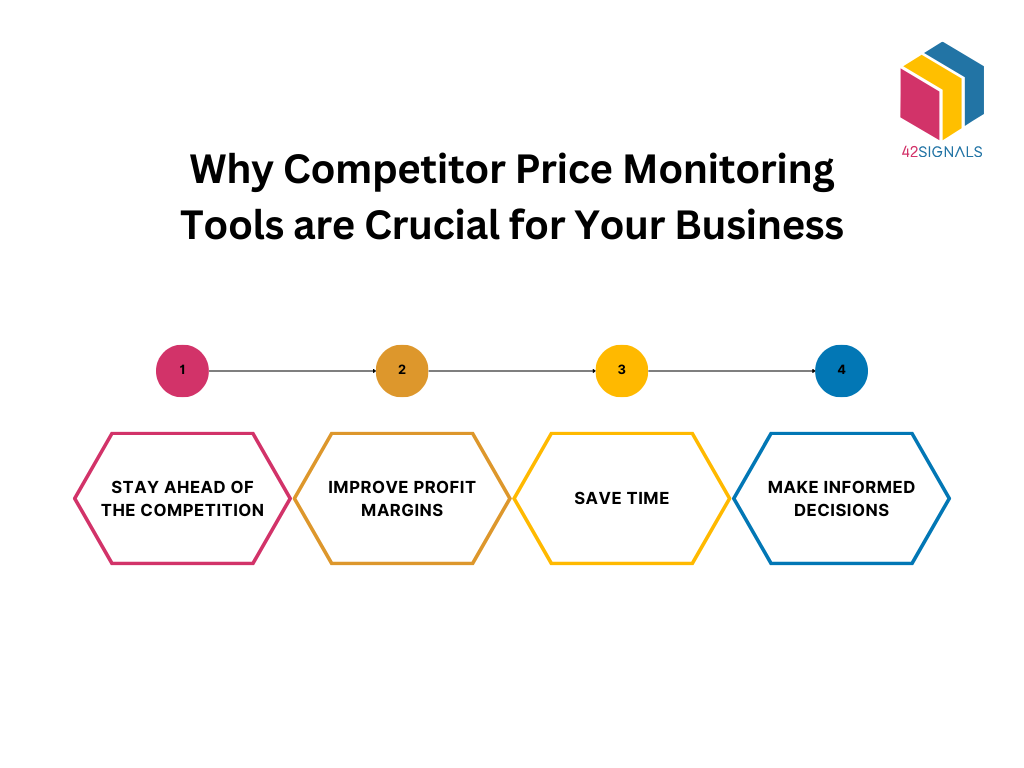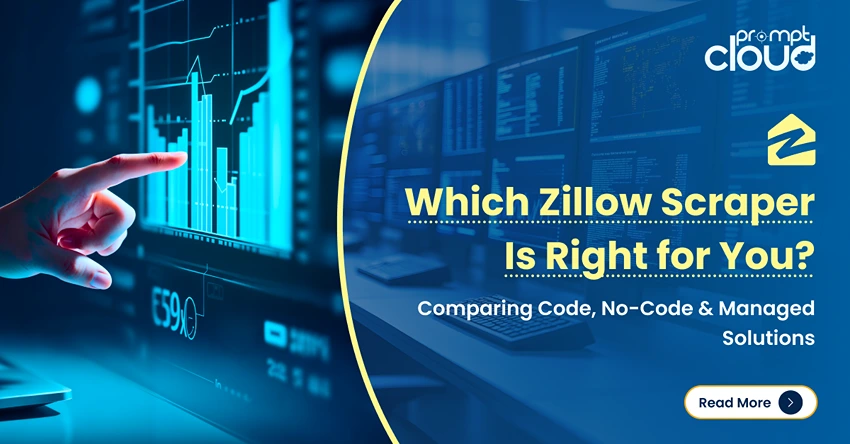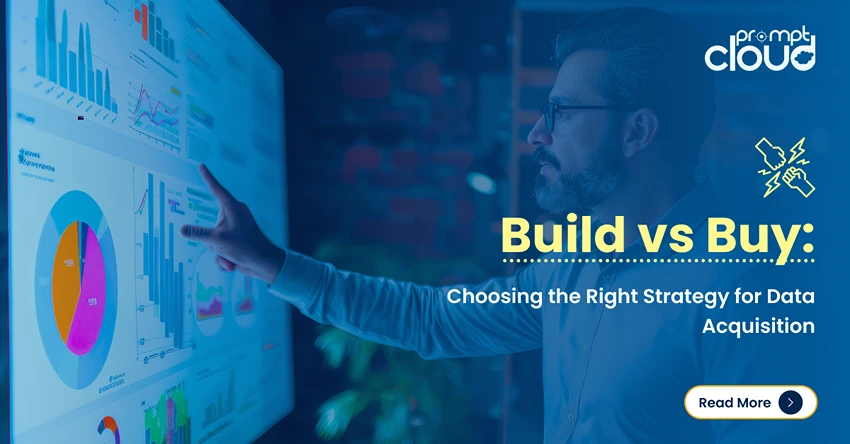
According to the experts at BigCommerce, almost 90% of online shoppers in the USA make their buying decisions based on price, rating it as the most important factor. Also, according to a study by the Pew Research Center, over 85% will compare prices before making a purchase. This means it’s vital that your business is aware not only of competitors’ prices but also of any discounts or special offers they’re currently running. You also need to have a clear idea of exactly what they’re selling, so you aren’t comparing apples with oranges. Let’s understand how leading e-commerce companies scrape prices from competitor websites with web scraping.

What is Competitor Price Monitoring?

Source: mayple
Competitor price monitoring is a strategic practice where e-commerce brands track the prices of similar products offered by their competitors. This involves systematically collecting and scraping pricing data from competitors’ websites to make informed decisions about their own pricing strategies. By staying updated on market trends and competitors’ pricing, businesses can adjust their prices to remain competitive, attract customers, and maximize profits.
For example, during the holiday season, a fashion e-commerce brand monitors competitors’ prices for winter clothing. By analyzing the data collected through web scraping, the brand can identify trends in discounting patterns and adjust its own promotional offers to stay competitive. For example, if a competitor starts a 30% off sale on winter jackets, the brand can quickly launch a similar or better promotion. Scrape prices data to stay competitive.
The Importance of Competitor Price Monitoring

Source: 42Signals
Price is often the primary factor influencing purchase decisions for online shoppers, making it crucial for businesses to keep a close eye on what their competitors are doing. By monitoring competitor prices, e-commerce brands can ensure they are offering competitive rates, which is essential for attracting and retaining customers. Scrape prices data for competitive advantage.
One of the key benefits of competitor price monitoring is the ability to understand market trends and consumer behavior. By tracking the pricing strategies of competitors, businesses can gain valuable insights into the market’s overall direction. This includes recognizing when competitors introduce discounts or special offers and understanding the timing and nature of these promotions. For instance, during the holiday season, it’s common to see significant price reductions and special deals. By being aware of these trends, a business can align its promotional activities to capture the attention of price-sensitive customers.
Moreover, competitor price monitoring helps in optimizing profit margins. It’s a delicate balance – pricing products too high can drive customers to competitors, while pricing too low can erode profit margins. By keeping an eye on competitors’ prices, businesses can find that sweet spot where they can attract customers while still maintaining healthy margins. This involves not just looking at the base price, but also considering factors like shipping costs, taxes, and any additional fees that might affect the final price the customer pays.
Another critical aspect of price monitoring is the ability to react swiftly to changes in the market. E-commerce is a fast-paced environment where prices can change frequently. With real-time price monitoring, businesses can quickly scrape prices data and adjust their prices in response to competitors’ moves. This agility is particularly important during high-stakes periods such as Black Friday or Cyber Monday, where pricing strategies can significantly impact sales performance.
Furthermore, competitor price monitoring provides a clear picture of the competitive landscape. It allows businesses to identify which products are being offered by competitors, at what price, and how these prices compare to their own offerings. This comprehensive understanding helps prevent the common pitfall of comparing apples to oranges. For example, two products might appear similar at first glance, but differences in features, quality, or customer service can justify a price difference. By ensuring that comparisons are accurate, businesses can make more informed pricing decisions.
Web Scraping for Price Monitoring
Web scraping enables businesses to scrape prices data and collect large volumes of pricing data from competitors’ websites efficiently and accurately, providing real-time insights that inform strategic decision-making.
At its core, web scraping automates the process of extracting data from websites. For e-commerce businesses, this means continuously gathering up-to-date information on competitors’ prices, product offerings, discounts, and promotions. This data is essential for understanding market trends and responding swiftly to changes in the competitive environment. By using web scraping, businesses can automate the labor-intensive task of data collection, freeing up resources to focus on analysis and strategy.
One of the primary advantages of web scraping is its ability to provide real-time updates. In the fast-paced world of e-commerce, prices can change frequently, and staying ahead of these changes is key to maintaining competitiveness. Web scraping tools can be configured to collect data at regular intervals, ensuring that businesses have the most current information available. This real-time data allows for agile decision-making, enabling businesses to adjust prices promptly in response to competitor actions.
Furthermore, web scraping offers a level of comprehensiveness that manual data collection cannot match. It can gather detailed information across multiple competitors and product categories simultaneously, providing a holistic view of the market. This comprehensive data collection is vital for identifying pricing trends, such as seasonal discounts or promotional patterns, that can influence a business’s pricing strategy. For instance, during the holiday season, a company can use web scraping to track competitors’ discount patterns and tailor its own promotions to remain competitive.
Web scraping also supports scalability, making it an ideal solution for businesses of all sizes. Whether a company is monitoring a handful of competitors or hundreds, web scraping tools can handle the scale and complexity of the data collection process. This scalability ensures that businesses can grow their monitoring efforts as needed without compromising on data accuracy or quality.
Web scraping is an invaluable asset for e-commerce businesses seeking to optimize their pricing strategies through effective competitor price monitoring. It automates the data collection process, provides real-time updates, supports scalability, and offers customizable data collection options. For business leaders, incorporating web scraping into their strategic toolkit means having the insights needed to stay competitive, agile, and profitable in the ever-evolving e-commerce landscape.
Bottom Line
Web scraping is an excellent way to gather pricing data for similar products/services offered by your competitors. If set up correctly, it can automatically gather large amounts of relevant information which you can use to monitor prices in real time, then set your own pricing strategies.
Get in touch with PromptCloud at sales@promptcloud.com for custom web scraping solutions.



















